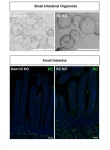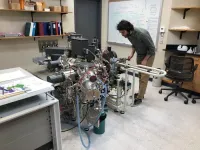(Press-News.org) About 1 in 10 prescription drugs — mainly brand-name and expensive drugs and those for rare diseases — has a manufacturer-sponsored patient support program, which usually includes financial, nursing and educational supports.
"In an era where policy-makers are grappling with escalating drug prices and budgetary impacts globally, the pharmaceutical industry promotes patient support programs as adding complementary value to a drug through supporting medication adherence and enhancing clinical outcomes, patient experience or quality of life," writes Dr. Quinn Grundy, a registered nurse and assistant professor at the Lawrence Bloomberg Faculty of Nursing, University of Toronto, with coauthors.
To understand the range of prescription drugs with patient support programs, researchers quantified and evaluated patient support programs for drugs on the market as of August 2022. Of the total 2556 prescription drugs marketed by 89 companies, they identified programs for 256 drugs (10%). Almost two-thirds of companies (55; 62%) offered patient support programs. Although only about 10% of drugs on the market are biologics, they represent more than half of drugs that have a patient support program.
Patient support programs most frequently existed for drugs that are expensive. Of the 2214 drugs dispensed through retail pharmacies, 1632 (74%) cost $10 per unit or less whereas those with a patient support program had a median cost per unit of $208.40.
The researchers note that they may have underestimated the number of support programs, as their analysis relied on publicly available information and they may have missed patient support programs for very specialized, rare drugs.
While financial supports, nursing support and counselling are valuable to patients, the researchers found duplication of services across companies marketing drugs with the same active ingredients, and lack of transparency around what programs offered and their impacts.
"Whether manufacturer-sponsored patient support programs are the optimal model to provide care related to medicines is an open question. Models of care should be designed around people's health needs, not a particular product," says Dr. Grundy.
"Prevalence and nature of manufacturer-sponsored patient support programs for prescription drugs in Canada: a cross-sectional study" is published November 27, 2023.
END
Patient support programs for prescription drugs are common, especially for expensive drugs
2023-11-27
ELSE PRESS RELEASES FROM THIS DATE:
Secrecy at Canada's pest management agency must end
2023-11-27
Health Canada increased maximum residue limits for glyphosate in some crops, such as oats and beans, in 2021 despite concerns about the health impact of glyphosate-based herbicides (GBHs). The World Health Organization's (WHO) International Agency for Research on Cancer regards these pesticides as genotoxic, meaning they can damage DNA and are likely carcinogenic.
"Health Canada's PMRA considers pesticide sales and risk evaluation data in Canada to be confidential business information, and independent researchers cannot access these data, even through the Access to Information Act. Such ...
Decoding cell fate: Key mechanism in stem cell switch identified
2023-11-24
Stem cells can differentiate to replace dead and damaged cells. But how do stem cells decide which type of cell to become in a given situation? Using intestinal organoids, the group of Bon-Kyoung Koo at IMBA and the Institute for Basic Science identified a new gene, Daam1, that plays an essential role, switching on the development of secretory cells in the intestine. This finding, published on November 24 in Science Advances, opens new perspectives in cancer research.
Our bodies are, in some ways, like cars – to keep functioning, they need to be checked and repaired regularly. In the case of our bodies, ...
The Fens of eastern England once held vast woodlands, study finds
2023-11-24
The Fens of eastern England, a low-lying, extremely flat landscape dominated by agricultural fields, was once a vast woodland filled with huge yew trees, according to new research.
Scientists from the University of Cambridge studied hundreds of tree trunks, dug up by Fenland farmers while ploughing their fields. The team found that most of the ancient wood came from yew trees that populated the area between four and five thousand years ago.
These trees, which are a nuisance when they jam farming equipment during ploughing, contain a treasure trove of perfectly preserved ...
Premature death of autistic people in the UK investigated for the first time
2023-11-24
A new study led by UCL researchers confirms that autistic people experience a reduced life expectancy, however the number of years of life lost may not be as high as previously claimed.
The research, published in The Lancet Regional Health – Europe, is the first to estimate the life expectancy and years of life lost by autistic people living in the UK.
The team used anonymised data from GP practices throughout the UK to study people who received an autism diagnosis between 1989 to 2019. They ...
How do plants determine where the light is coming from ?
2023-11-23
Plants have no visual organs, so how do they know where light comes from? In an original study combining expertise in biology and engineering, the team led by Prof Christian Fankhauser at UNIL, in collaboration with colleagues at EPFL, has uncovered that a light-sensitive plant tissue uses the optical properties of the interface between air and water to generate a light gradient that is 'visible' to the plant. These results have been published in the journal Science.
The majority of living organisms (micro-organisms, plants and animals) have the ability to determine the origin of a light source, even in the absence of a sight organ comparable to the eye. This information is invaluable ...
Study provides fresh insights into antibiotic resistance, fitness landscapes
2023-11-23
E. coli bacteria may be far more capable at evolving antibiotic resistance than scientists previously thought, according to a new study published in Science on November 24.
Led by SFI External Professor Andreas Wagner, the researchers experimentally mapped more than 260,000 possible mutations of an E. coli protein that is essential for the bacteria’s survival when exposed to the antibiotic trimethoprim.
Over the course of thousands of highly realistic digital simulations, the researchers then found that 75% of all possible evolutionary paths of the E. coli protein ultimately ...
Separating out signals recorded at the seafloor
2023-11-23
Blame it on plate tectonics. The deep ocean is never preserved, but instead is lost to time as the seafloor is subducted. Geologists are mostly left with shallower rocks from closer to the shoreline to inform their studies of Earth history.
“We have only a good record of the deep ocean for the last ~180 million years,” said David Fike, the Glassberg/Greensfelder Distinguished University Professor of Earth, Environmental, and Planetary Sciences in Arts & Sciences at Washington University in St. Louis. “Everything else is just shallow-water deposits. So it’s really important to understand the bias that might be present when we look ...
Dolomite crystals require cycles of saturation conditions to grow
2023-11-23
Addressing the long-standing “dolomite problem,” an oddity that has vexed scientists for nearly 200 years, researchers report that dolomite crystals require cycling of saturation conditions to grow. The findings provide new insights into how dolomite is formed and why modern dolomite is primarily found in natural environments with pH or salinity fluctuations. Dolomite – a calcium magnesium carbonate – is one of the major minerals in carbonate rocks, accounting for nearly 30% of the sedimentary carbonate minerality in Earth’s crust. However, despite its geological abundance, dolomite does not readily grow under laboratory conditions, ...
FLSHclust, a new algorithm, reveals rare and previously unknown CRISPR-Cas systems
2023-11-23
Using a new algorithm called FLSHclust (“flash clust”), researchers have discovered 188 rare and previously unknown CRISPR-linked gene modules – including a novel type VII CRISPR-Cas system – among billions of protein sequences. The approach and its findings provide novel opportunities for harnessing CRISPR systems and understanding the vast functional diversity of microbial proteins. CRISPR systems have been leveraged to develop a growing suite of novel biomolecular approaches, including CRISPR/Cas-mediated genome editing. The discovery ...
Extremely energetic cosmic ray detected, but with no obvious source
2023-11-23
An extremely energetic cosmic ray – an extragalactic particle with an energy exceeding ~240 exa-electron volts (EeV) – has been detected by the Telescope Array experiment’s surface detector, researchers report. However, according to the findings, its arrival direction shows no obvious source. Ultrahigh-energy cosmic rays (UHECRs) are subatomic charged particles from space with energies greater than 1 EeV – roughly a million times as high as the energy reached by human-made particle accelerators. Although low-energy cosmic rays primarily emanate from the sun, the origins of rarer UHECRs are thought to be related to the most energetic phenomena in the Universe, ...


